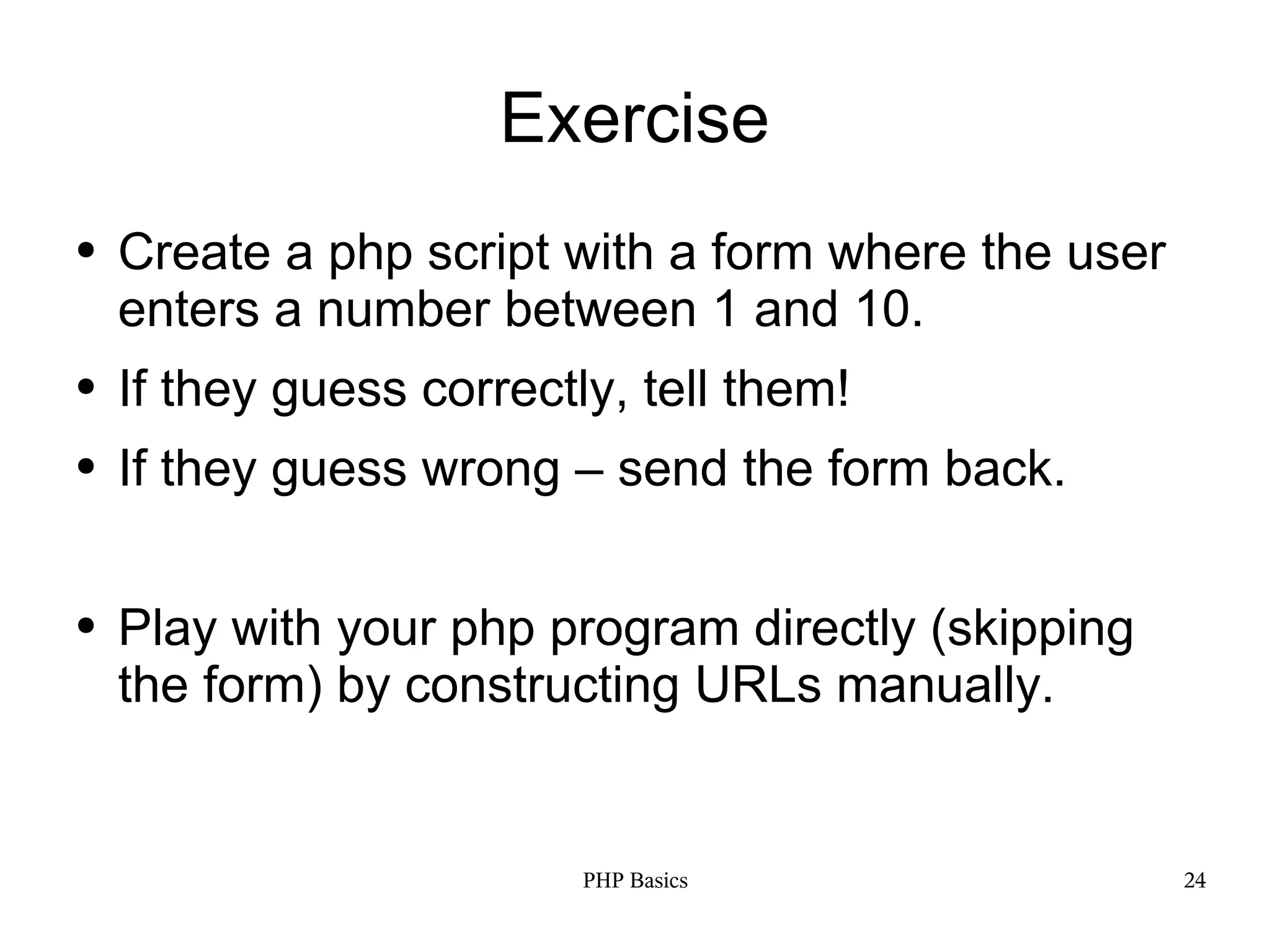The document provides an introduction to PHP basics, including: - PHP code is contained within <?php ?> tags in HTML documents and can control conditional HTML output - PHP runs on the server and processes files to produce output like HTML for the client browser - The PHP language syntax is similar to C/C++/JavaScript with variables, arrays, functions, and control structures - PHP can generate HTML output using echo, print, and printf functions - Form data is accessible via the $_REQUEST global array in PHP to retrieve submitted field values
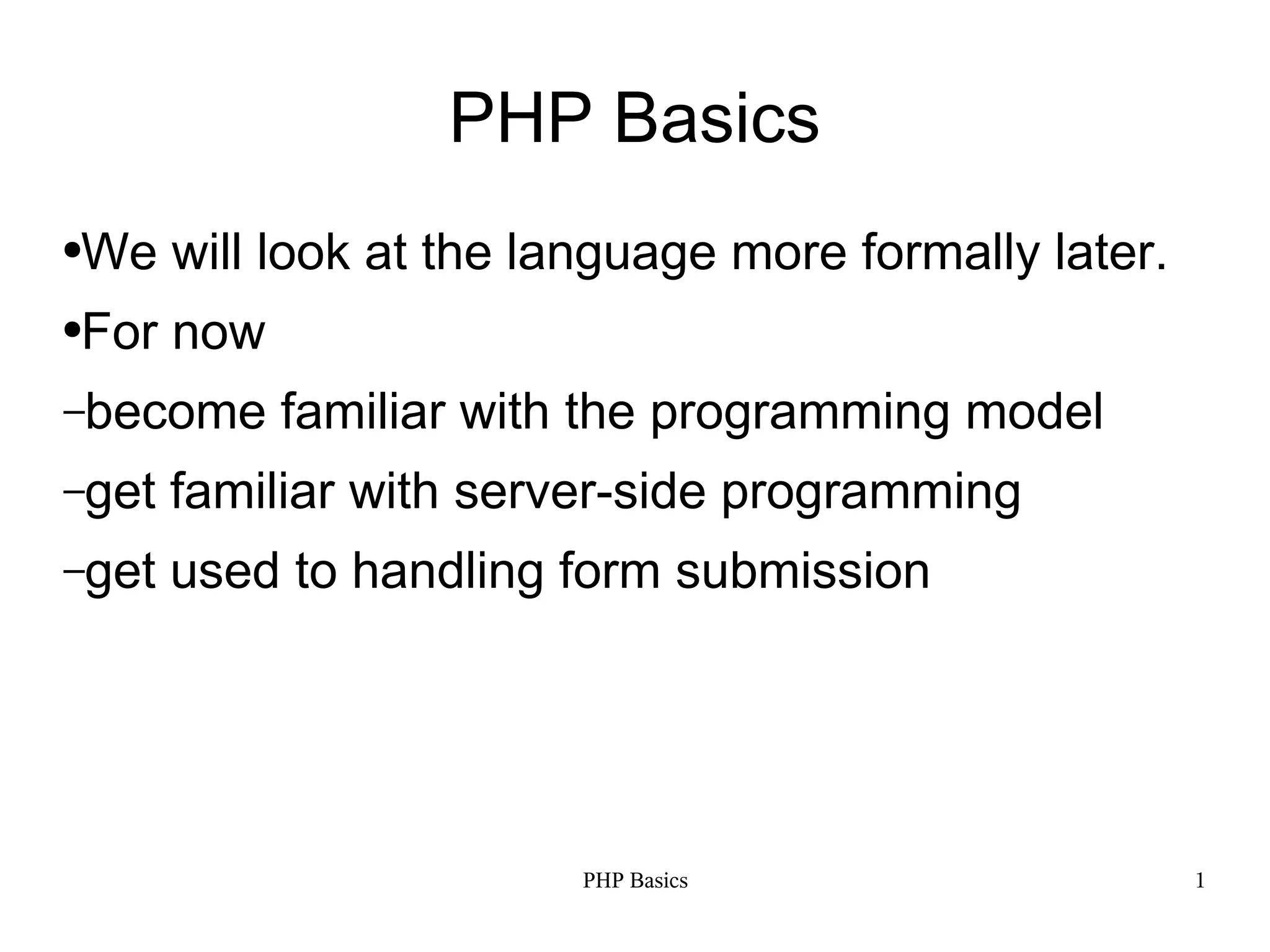
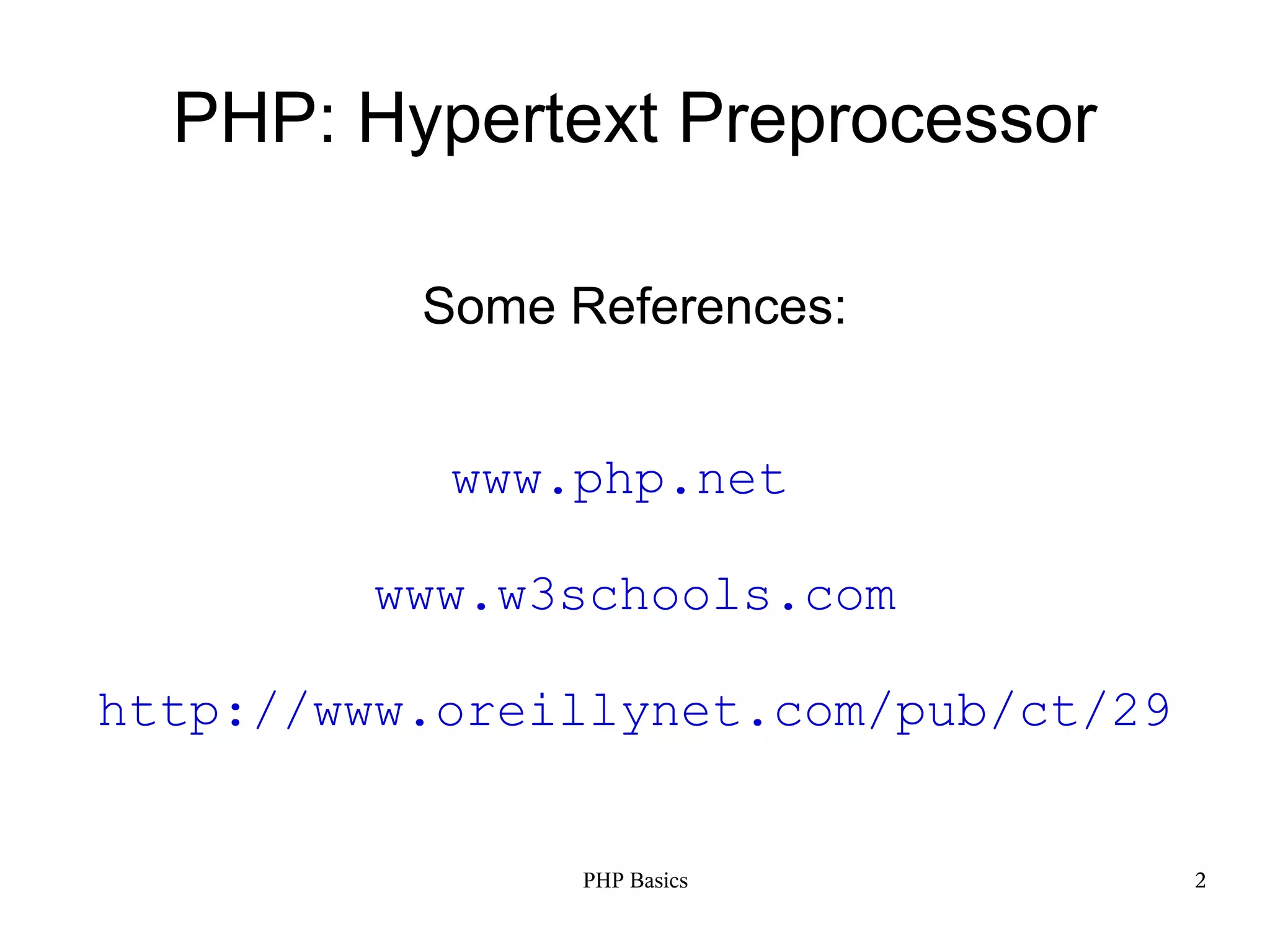
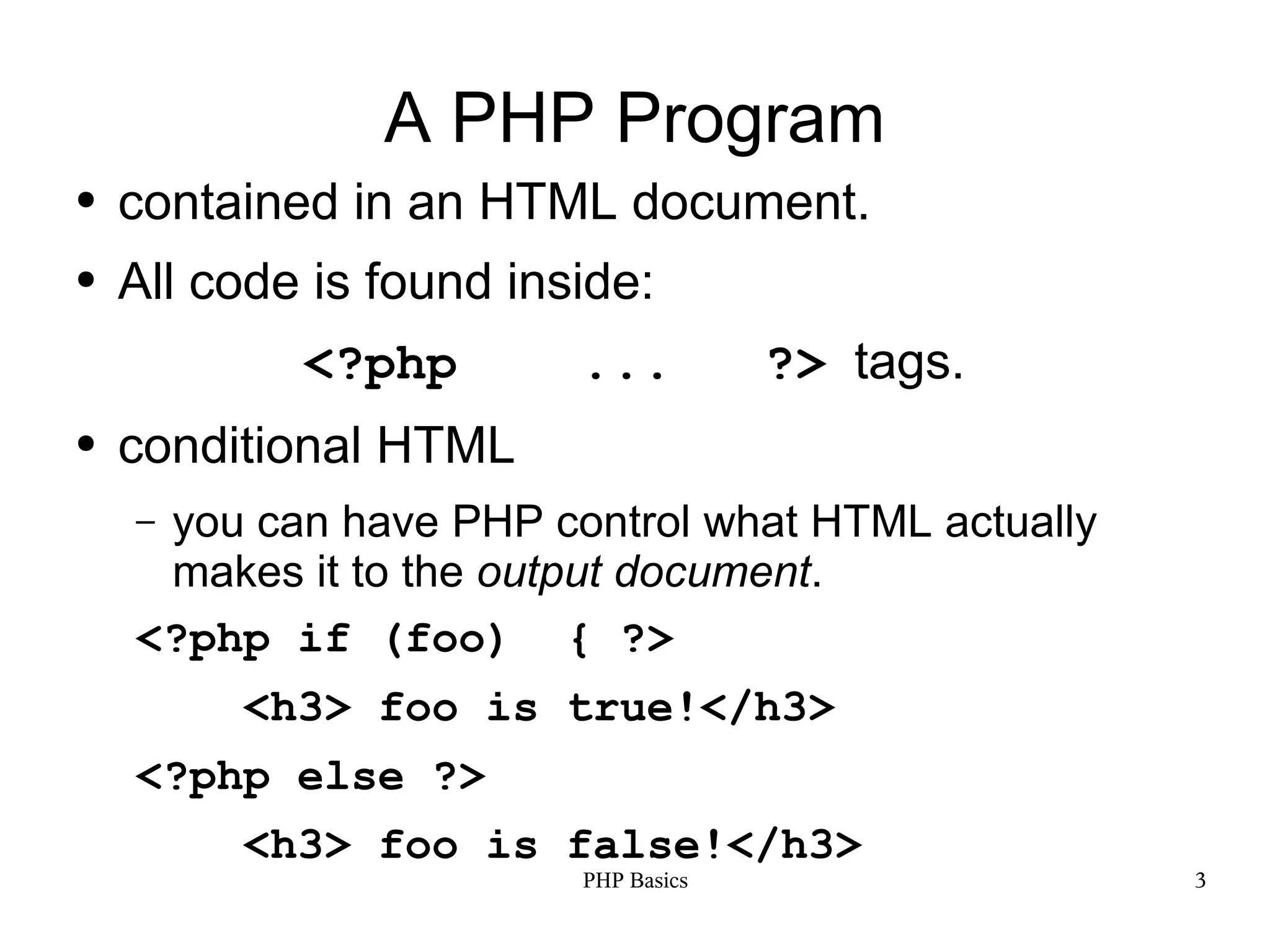
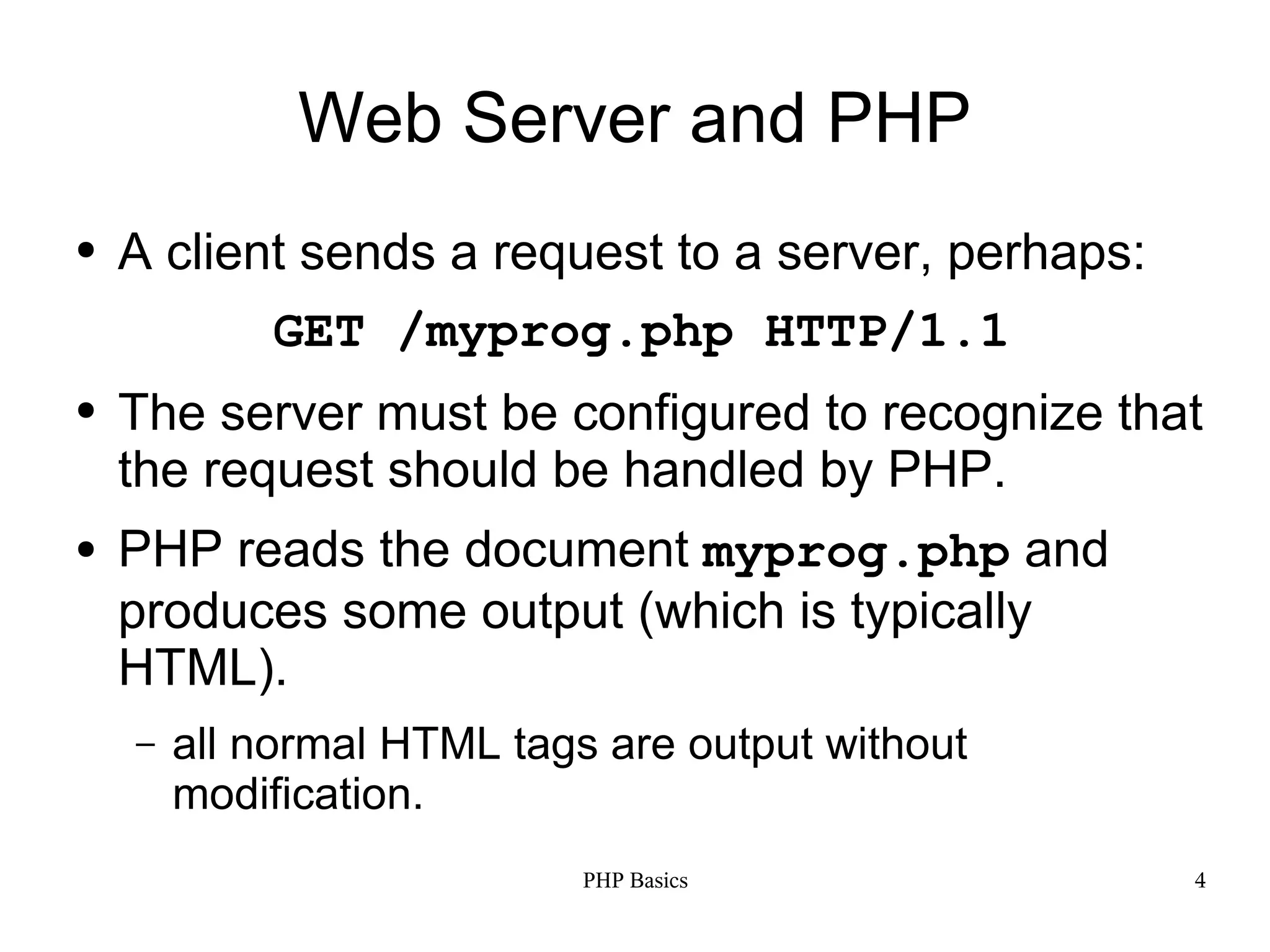
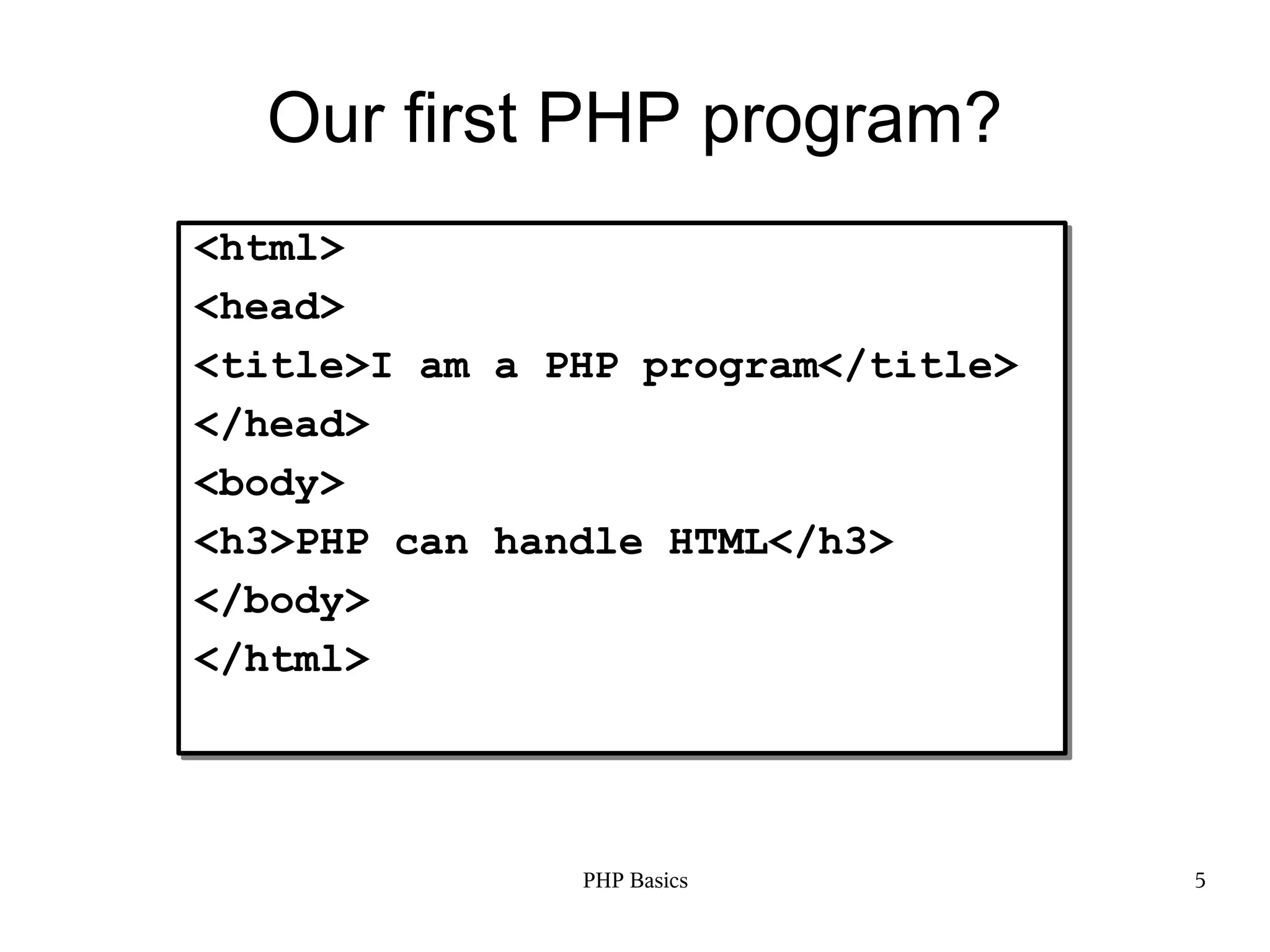
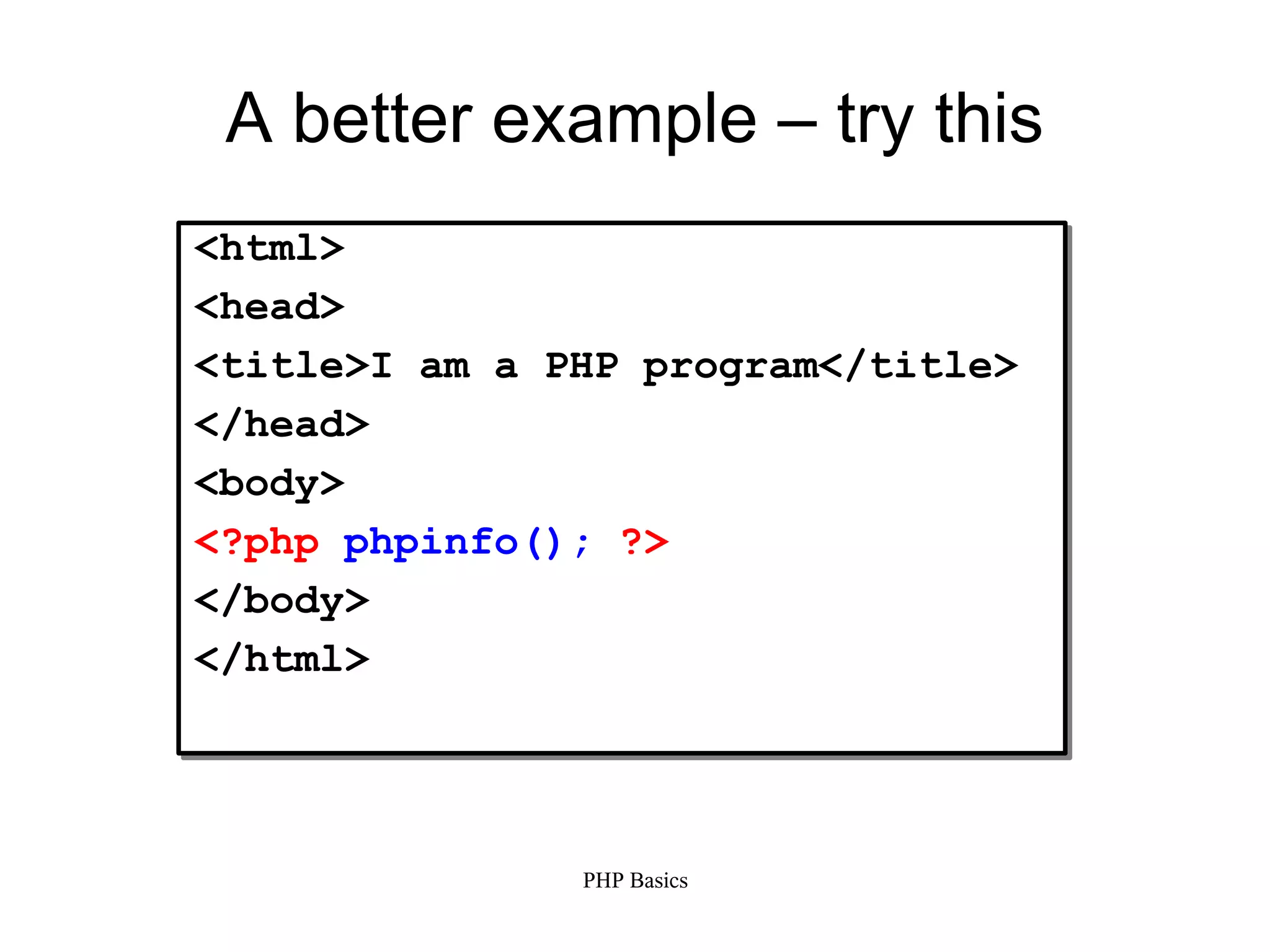
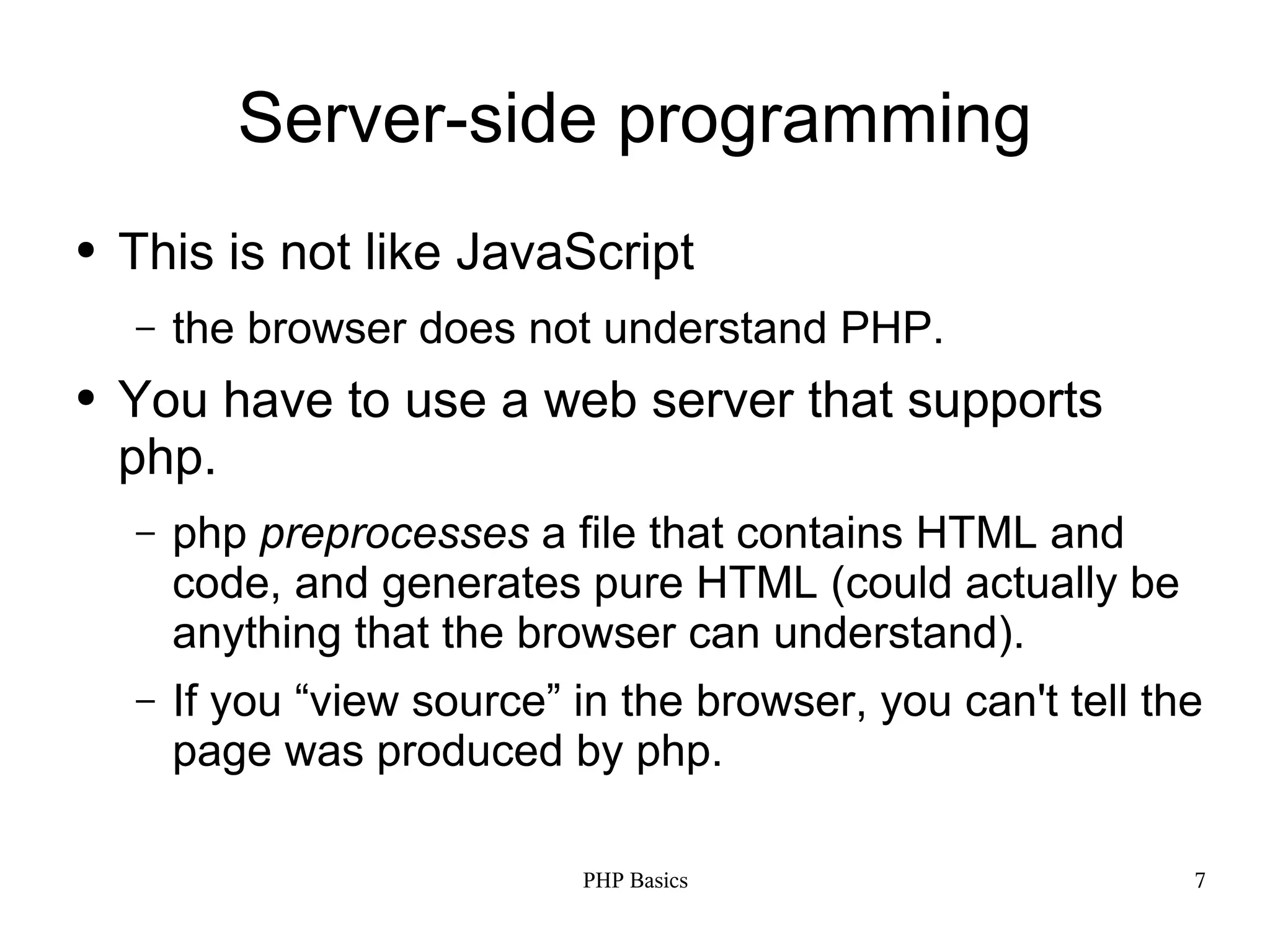
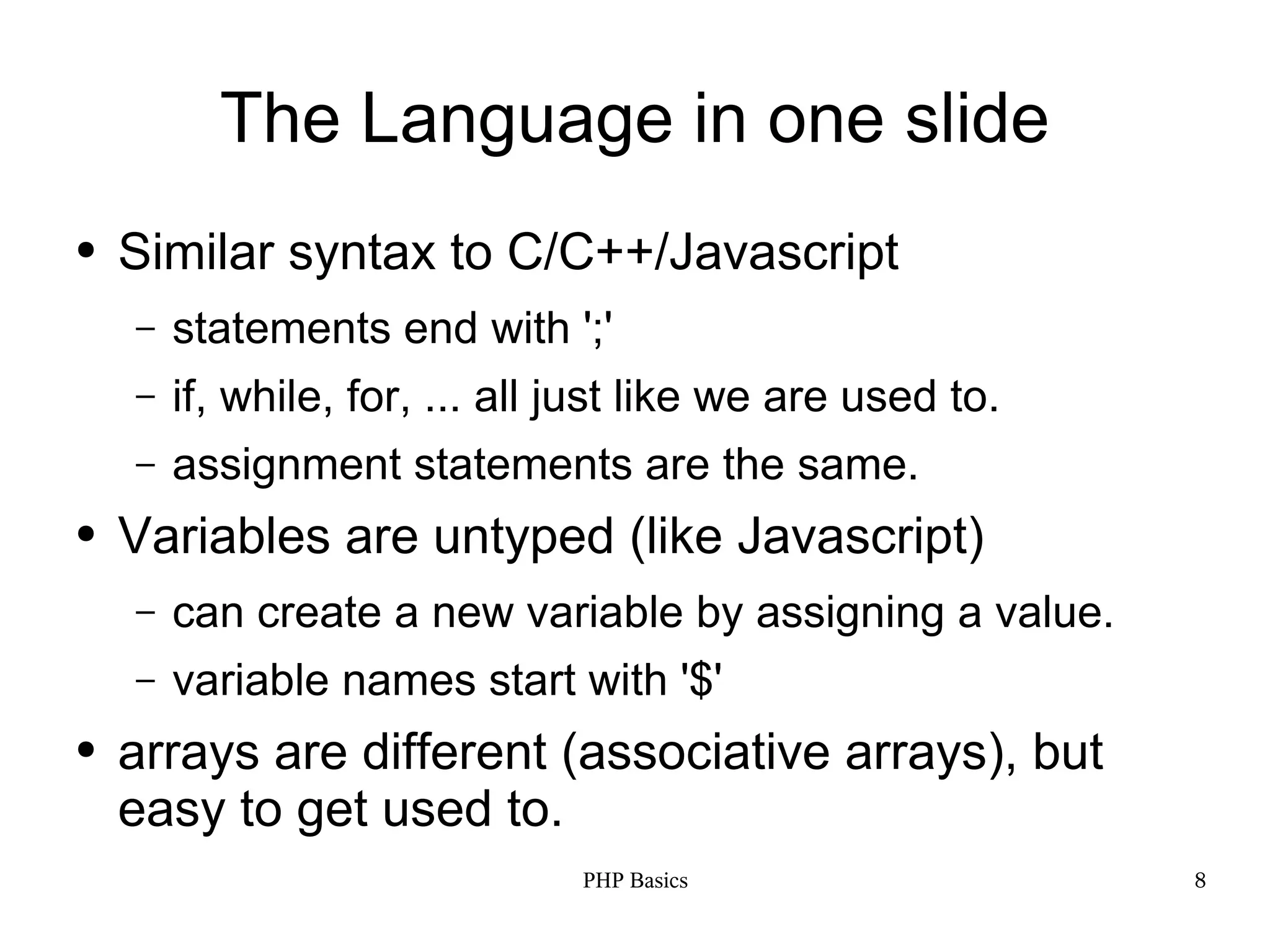
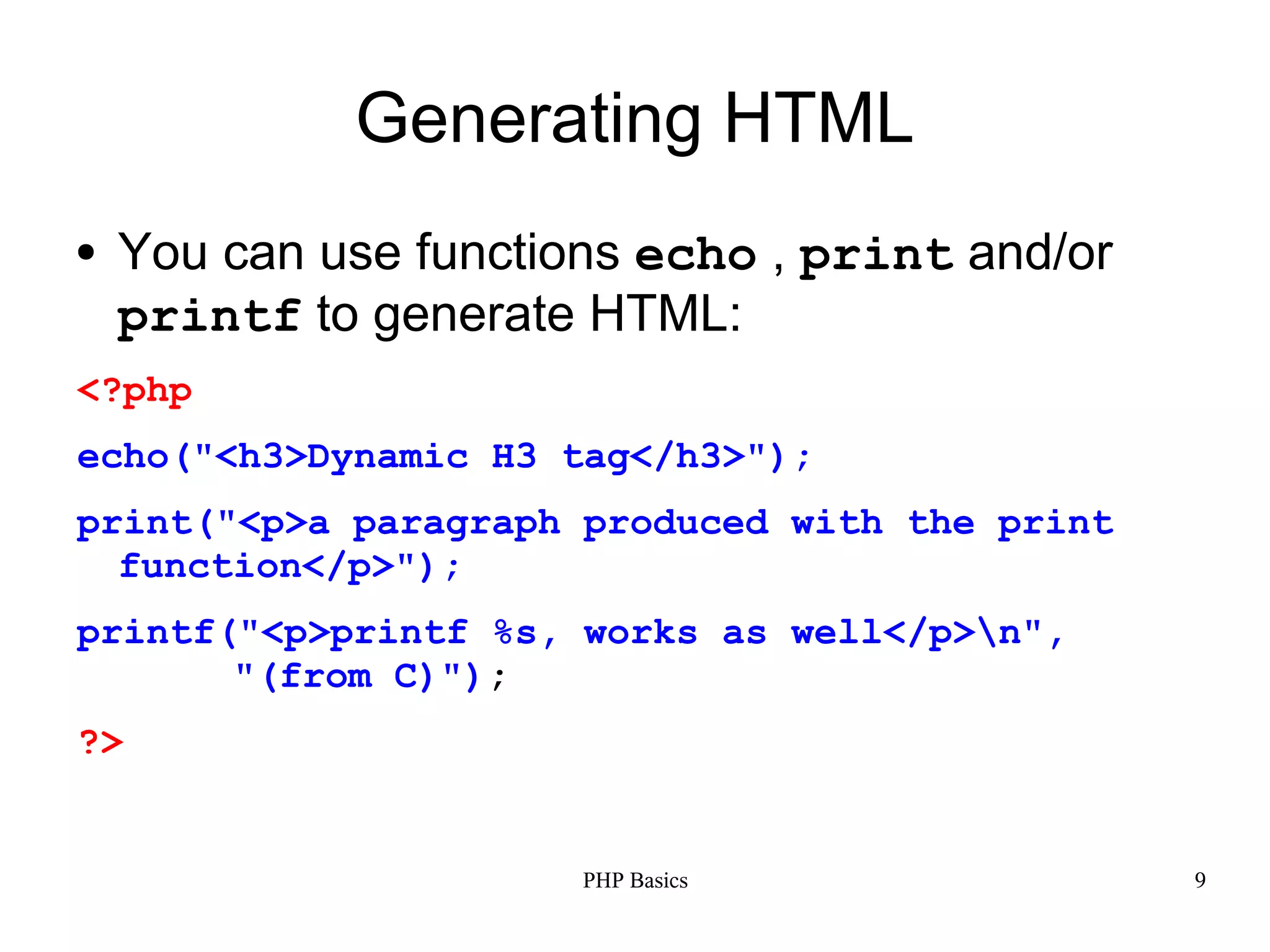
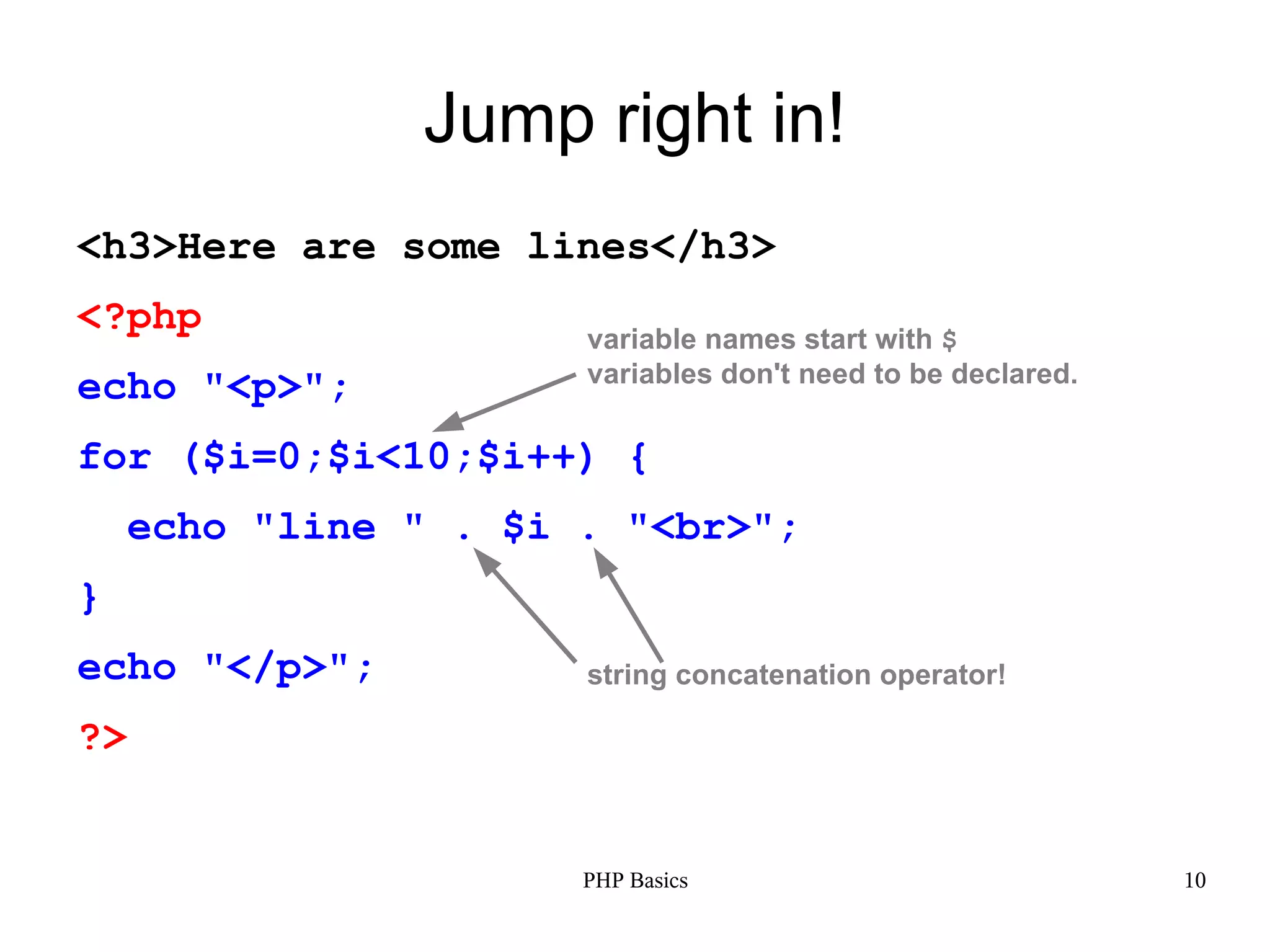
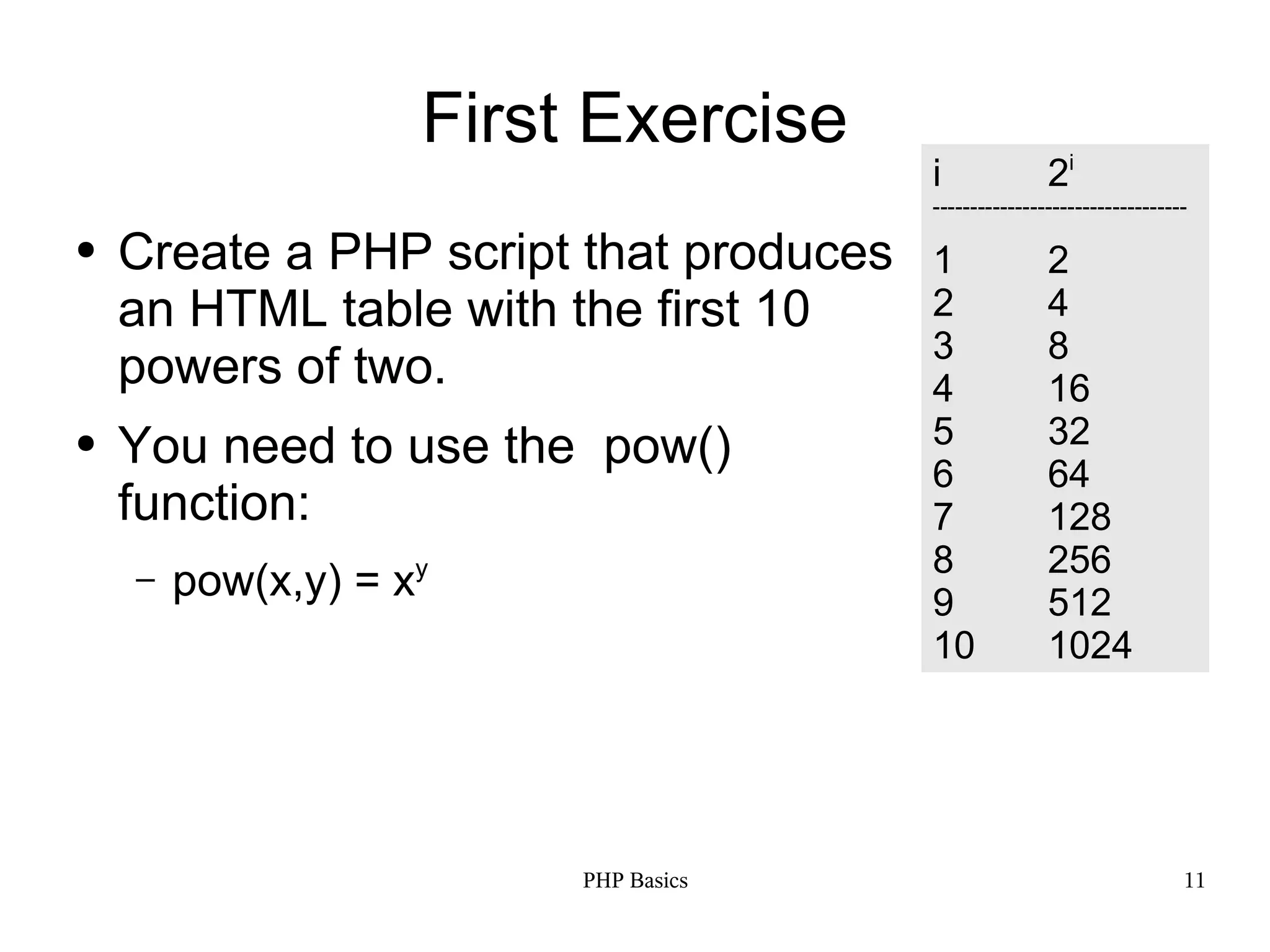
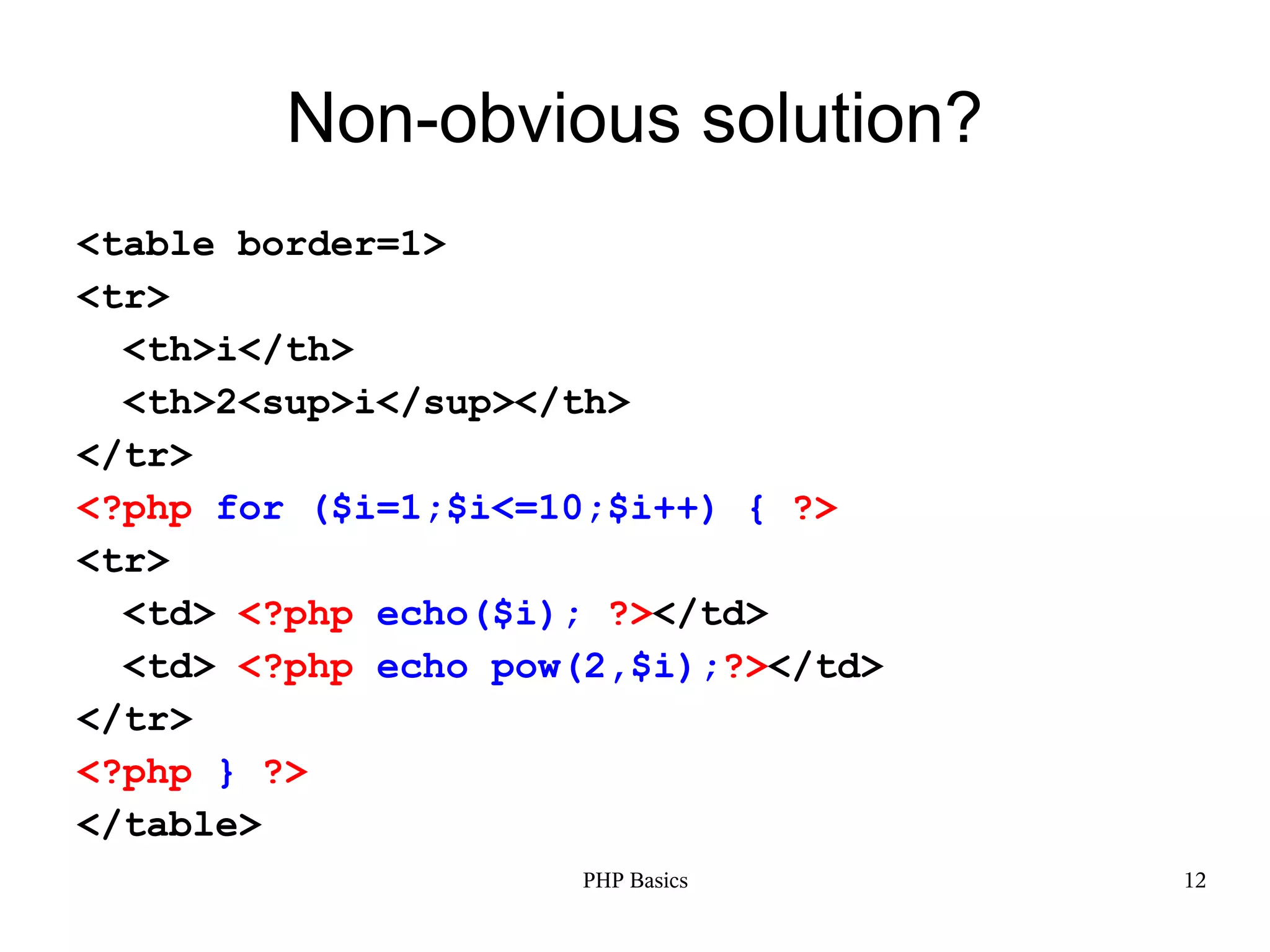
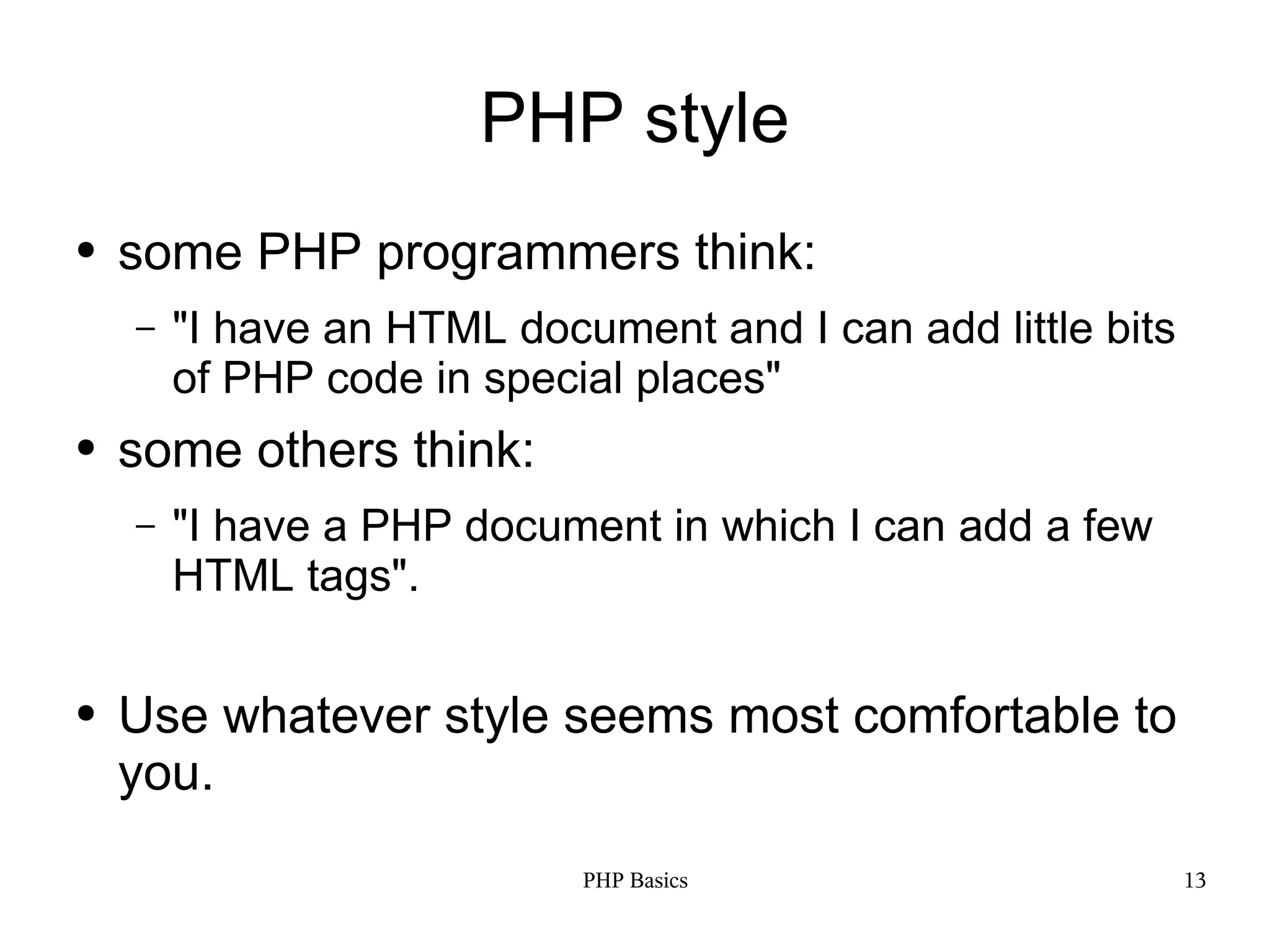
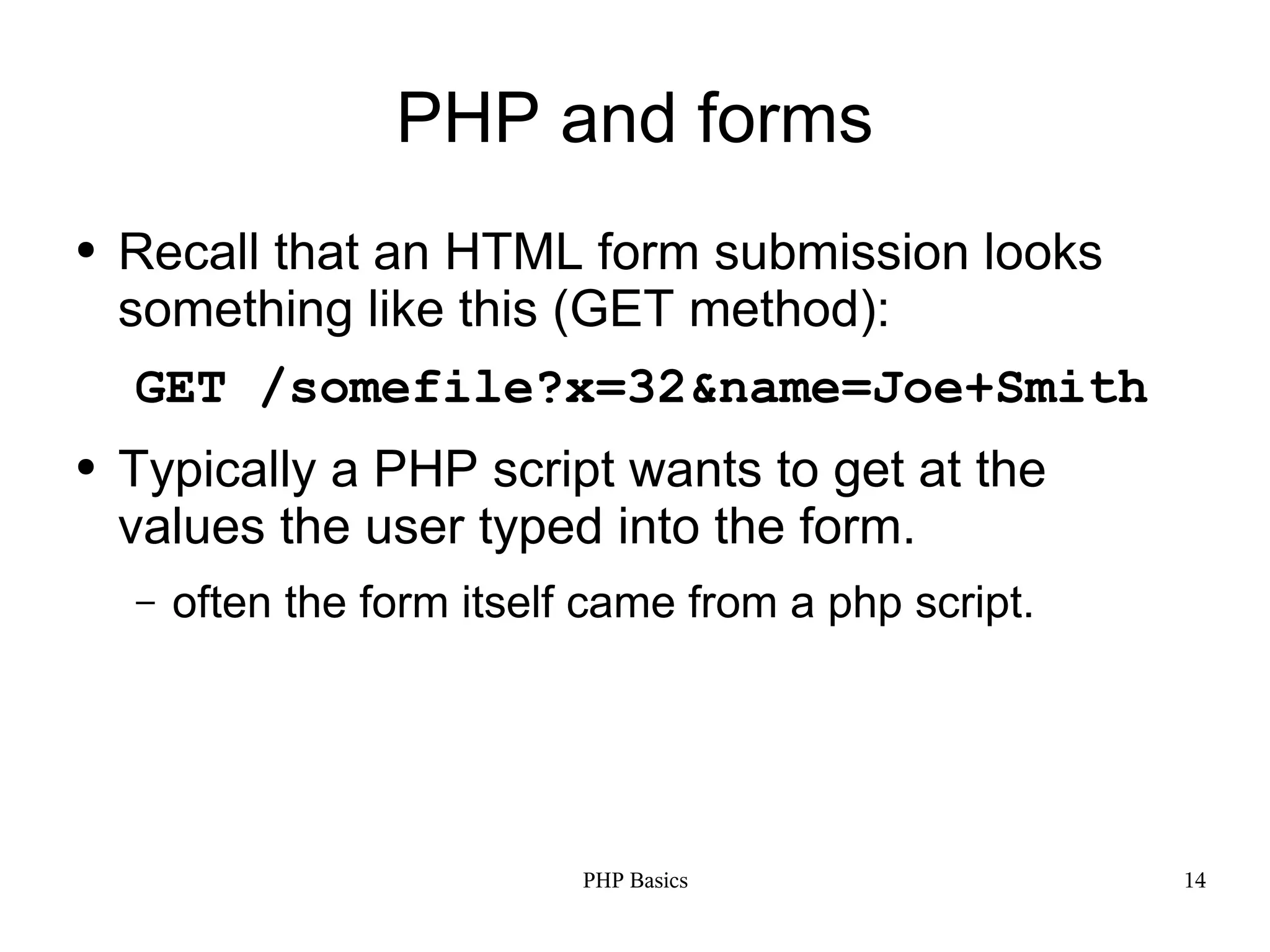
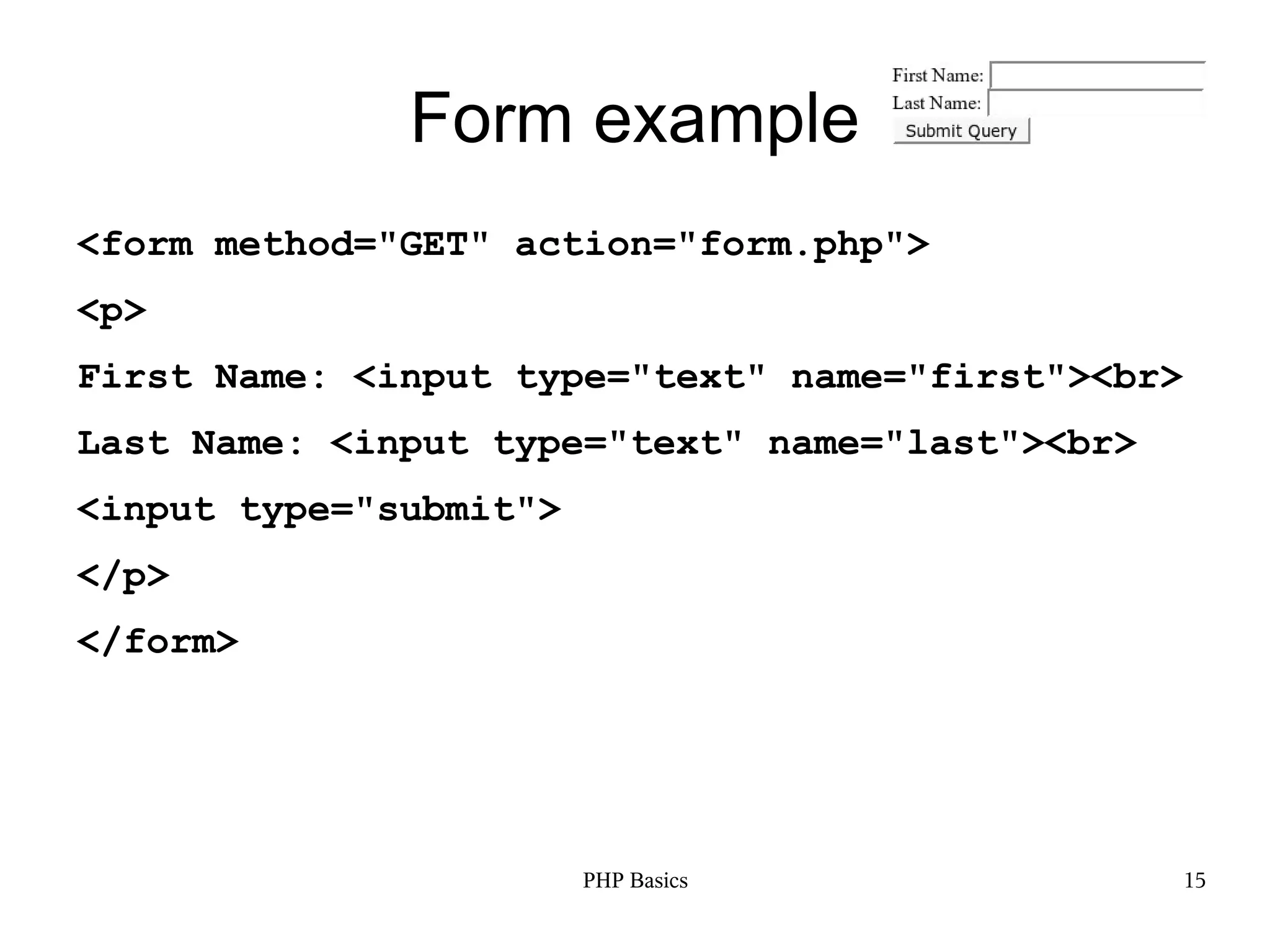
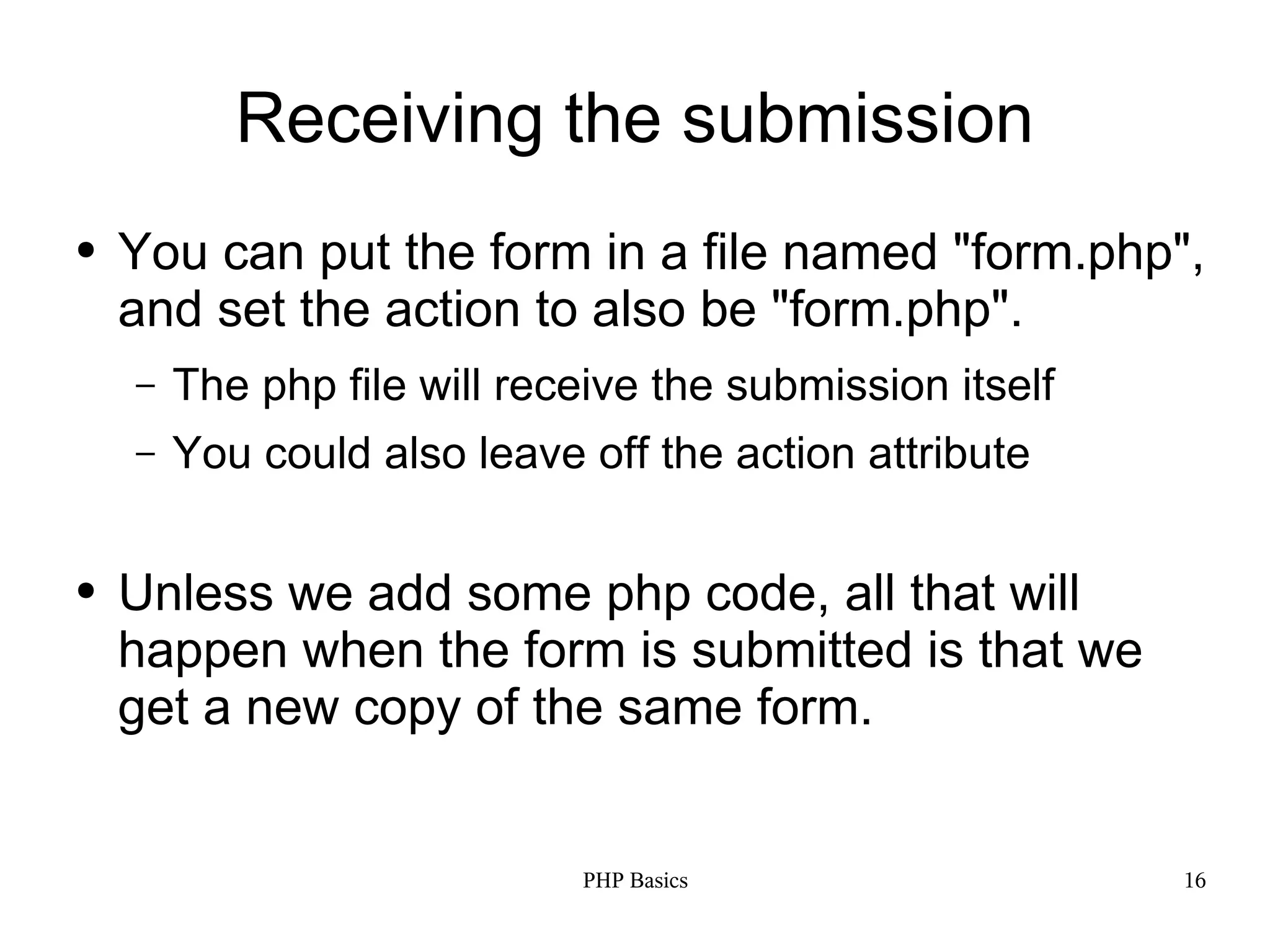
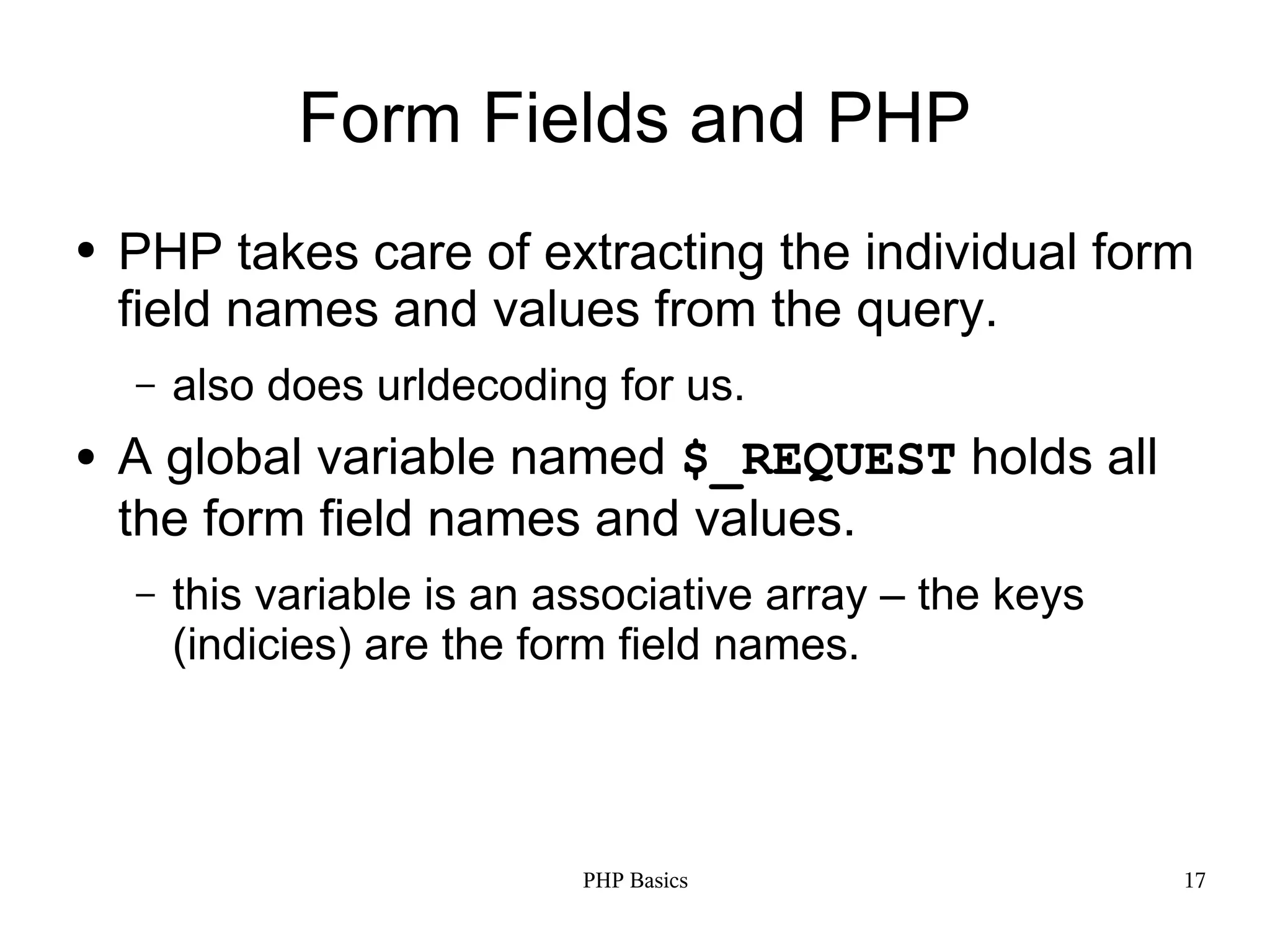
![Getting the values ● To get the value the user submitted for the field named "first": $_REQUEST['first'] ● To get the value the user submitted for the field named "last": $_REQUEST['last'] PHP Basics 18](https://image.slidesharecdn.com/phpbasics-111228044538-phpapp01/75/Phpbasics-18-2048.jpg)
![Adding some PHP to the form ● We could simply print out the values entered (as HTML): <?php echo "<p>First name is "; echo $_REQUEST['first'] . "</p>"; echo "<p>Last name is "; echo $_REQUEST['last'] . "</p>"; ?> PHP Basics 19](https://image.slidesharecdn.com/phpbasics-111228044538-phpapp01/75/Phpbasics-19-2048.jpg)
![Or do it like this <p>First name is <?php echo $_REQUEST['first'] ?> </p> <p>Last name is <?php echo $_REQUEST['last'] ?> </p> PHP Basics 20](https://image.slidesharecdn.com/phpbasics-111228044538-phpapp01/75/Phpbasics-20-2048.jpg)
![Make a php form handler <form method="GET" action="form.php"> <p>First Name: <input type="text" name="first"><br> Last Name: <input type="text" name="last"><br> <input type=submit> </p></form> <?php echo "<p>First name is "; echo $_REQUEST['first'] . "</p>"; echo "<p>Last name is "; echo $_REQUEST['last'] . "</p>"; ?> PHP Basics 21](https://image.slidesharecdn.com/phpbasics-111228044538-phpapp01/75/Phpbasics-21-2048.jpg)
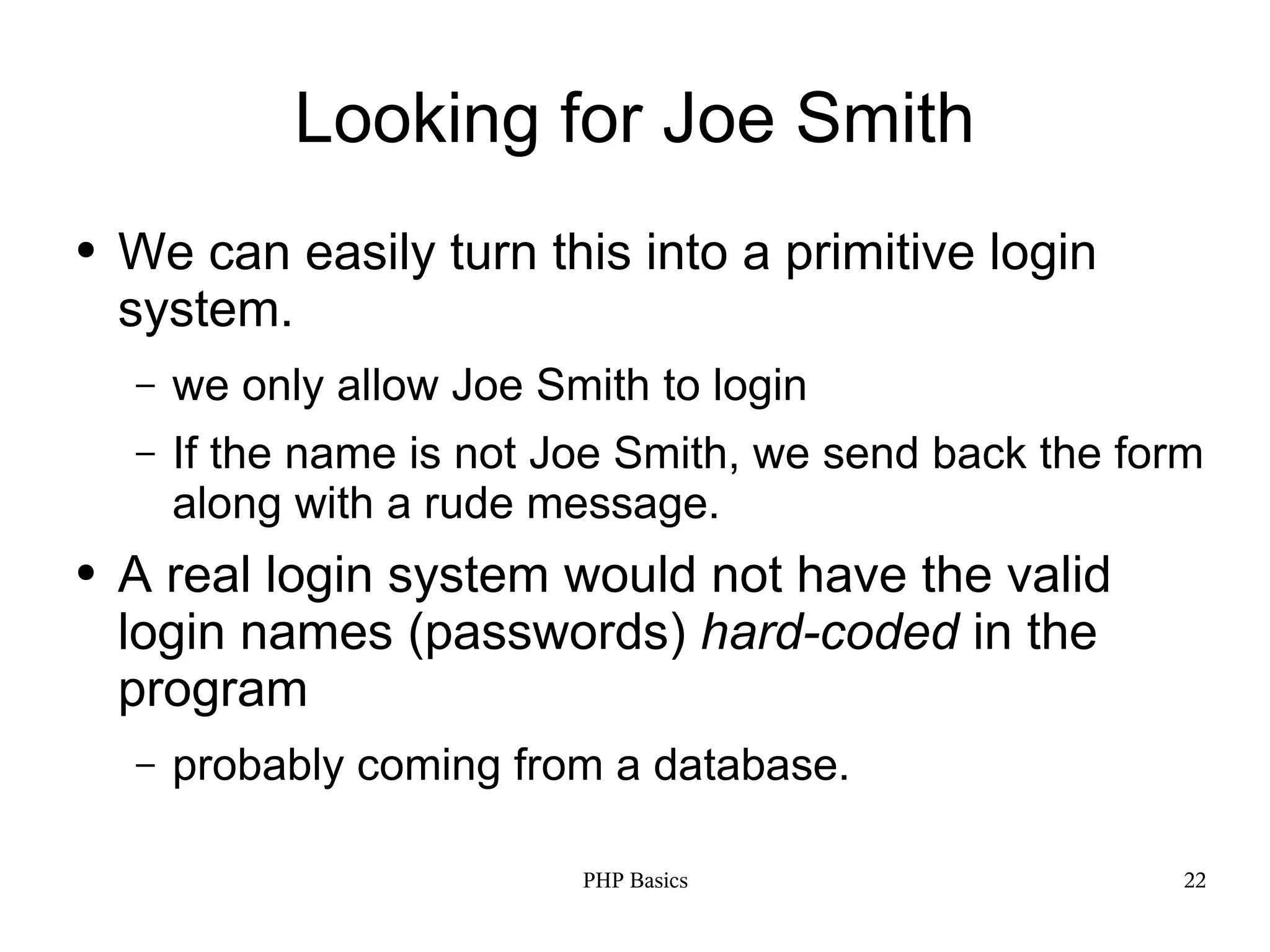
![Login handling form <?php if (($_REQUEST['first'] == "joe") && ($_REQUEST['last'] == "smith")) { echo "<p>Welcome back joe</p>; } else { ?> <p>You are not the correct person.</p> <p>Try again</p> <form method="GET" action="form.php"> <p>First Name: <input type="text" name="first"><br> Last Name: <input type="text" name="last"><br> <input type=submit> </p></form> PHP Basics 23 <?php } ?>](https://image.slidesharecdn.com/phpbasics-111228044538-phpapp01/75/Phpbasics-23-2048.jpg)
